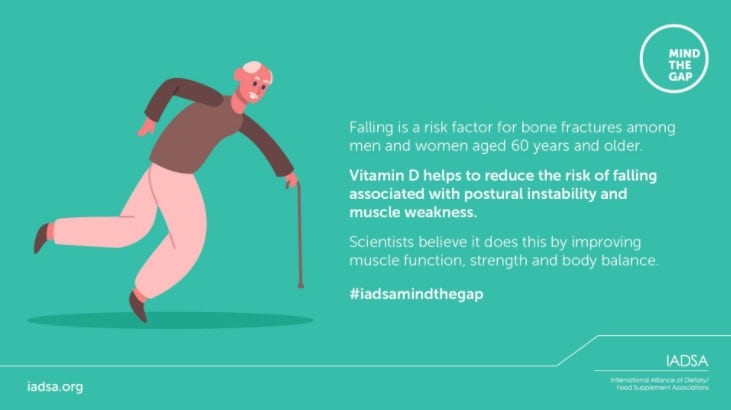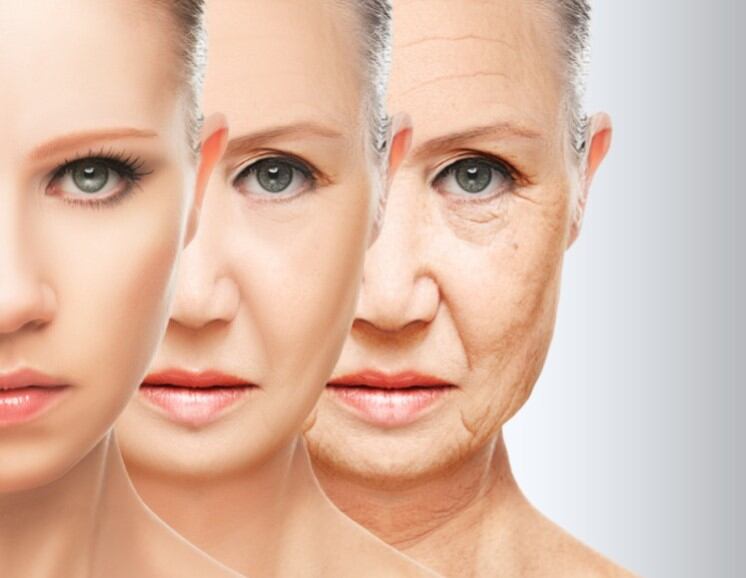Available on the IADSA’s Mind the Gap platform, the resource is a mix of positive experiences and real-life examples of successful national nutrition programmes, all aiming to fill gaps in current scientific knowledge.
“The message of our latest Mind the Gap resource is simple: increasing vitamin D intake is a way to help older adults keep their bones strong and reduce the risk of suffering a fall,” says Simon Pettman, Executive Director of IADSA.
“With many people becoming less active as a result of lockdowns and self-isolation, the central message of this new story is more important now than ever.”
Vitamin D intake, particularly during the COVID-19 outbreak, has been linked to the condition’s onset and severity in individual human hosts.
The discovery was such that in December 2020, a letter was sent to world governments, signed by 120 health, science and medical experts from the UK, US, and Europe, stating clear scientific evidence existed that pointed to vitamin D’s ability to reduce Covid-19 infections, hospitalisations, and deaths.
The letter went on to recommend immediate, widespread and increased vitamin D intake to 4,000 International Units (IU) per day (or at least 2,000) for healthy adults.
Vitamin D & health
Vitamin D’s role in general health has rarely been in dispute with research implicating it in good bone health, cancer risk reduction and upkeep of a health immune system.
The IADSA’s resource seeks to emphasise the vitamin’s importance, not only physically but financially and the toll it takes on country’s healthcare systems.
According to the website, across the European Union, an estimated €26.4bn is spent every year treating osteoporosis-attributed bone fractures.
In the USA, the annual cost of treating fractures related to osteoporosis is €13.9bn ($17bn).
The World Health Organisation (WHO) estimates that there are 37.3 million falls every year – more than 100,000 a day – that are serious enough to require attention.
The mounting evidence has driven world government to take action at alleviating these concerns.
In 2003 Finland’s government implemented its first mandatory fortification of liquid milk products and fat spreads with vitamin D.
In 2010, the government followed this up by also recommending children, adolescents and the elderly to take vitamin D supplements.
Meanwhile, The European Commission in 2014, approved a health claim for vitamin D and a reduced risk of falling.
Vit D threshold too low?
Only last month, calls to increase the vitamin D threshold were made in the UK after experts deemed current levels of 25 nmol/L 25(OH)D to be too low.
The paper, written by experts in the fields of infectious diseases, medicine, endocrinology and gastroenterology, argues that since vitamin D is widely sold in 1,000 IU capsules it is universally agreed that doses up to 4,000 IU per day are safe.
Further recommendations identify a dose of 800–1,000 IU per day (20–25 micrograms per day) for all adults should be urgently promoted.
The paper pints to considerable variance between countries in recommendations for supplementation: 10 mg (400 IU) per day in the UK, 600 IU per day in the EU and 600 IU per day or 800 IU per day for those aged over 70 years in the USA.




